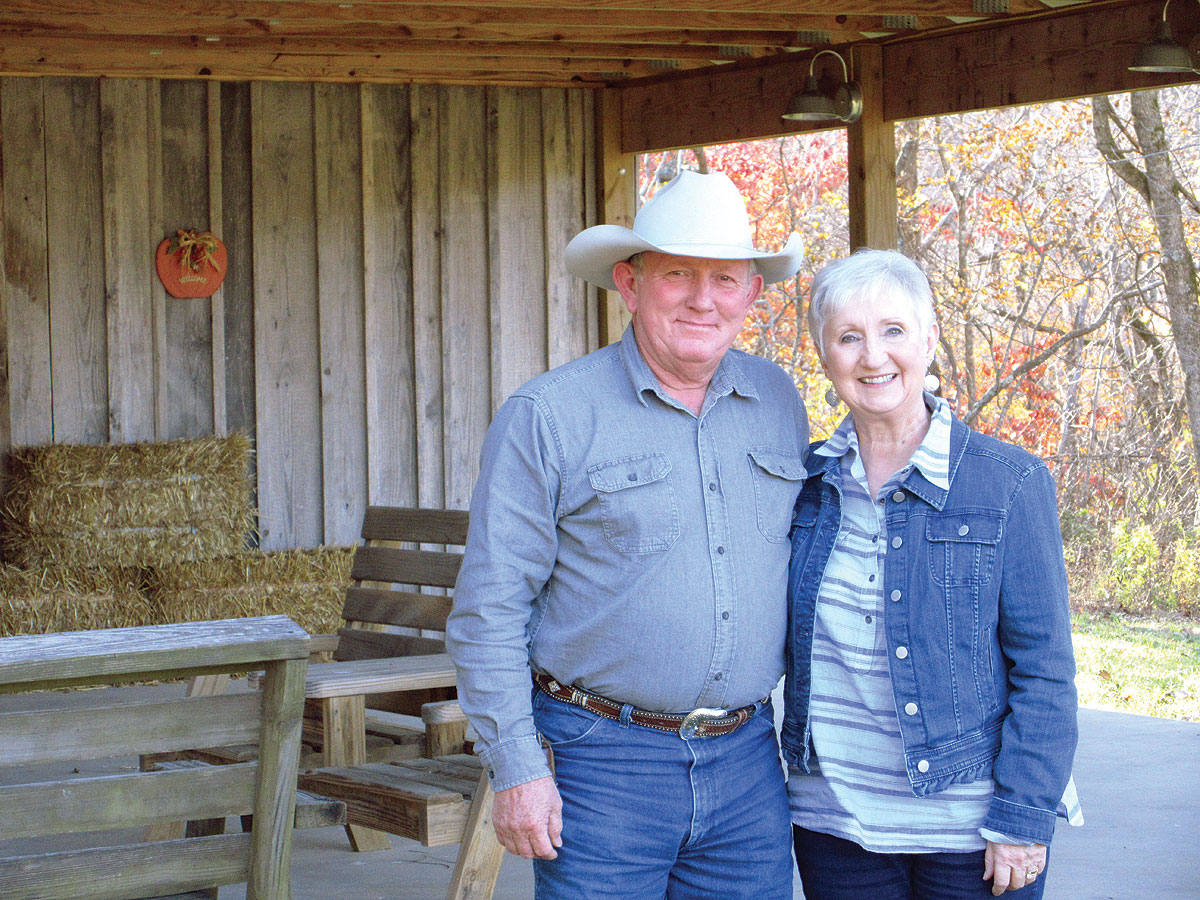 Seven years ago Rick Kelley, of Mansfield, Mo., stepped into a volunteer role that would have a huge impact on the production of his farm.
Seven years ago Rick Kelley, of Mansfield, Mo., stepped into a volunteer role that would have a huge impact on the production of his farm.
It all started when Rick became interested in attending the Management-Intensive Grazing School. Rick reminisced, “I first became interested in rotational grazing when I was doing a construction job for a neighbor. I would drive by his farm everyday. He had moved calves to stockpiled fescue. I had fed about 100 hay bales that winter and he hadn’t fed any. That’s what really opened my eyes.”
Shortly after that winter, Rick ran for a position on the Wright County Soil and Water Conservation District board to help other farmers receive the benefits. “When I sit down as a board member my main goal is to represent the farmer,” said Rick, who is currently board president.
When someone is interested in participating in a program through the SWCD Rick warns that it is a lengthy process and says the most important thing to have when applying is patience. “The programs are done on a first come, first served basis,” he explained.
Rick is quick to give credit where credit is due. He said, “So much of what Wright County Soil and Water is today is because of our former board members. They were very progressive. One of the biggest challenges I faced stepping into this role was that Wright County had so much going on and we not only needed to maintain that but look to the future and keep expanding.”
Board member aside, as a local farmer Rick has participated in a number of farm programs through the Wright County SWCD.
One major project Rick put into place on his farm with the help of SWCD is a rotational grazing system. He has set up a total of 40 paddocks on six different farms where he runs 100 beef cows and 40 replacement heifers. The cost-share program allowed him to dig a well, install pipelines, tire water tanks and fencing. The objective is to not graze on a paddock again for 30 days but that will vary depending on the time of year. Rick said, “The perfect paddock size for me is a 10-acre paddock. I generally run 25-30 cows per farm and 10 acres works well. It’s enough cows that I can move them fast but not so many that I can’t slow down and make them eat the less desirable forages.”
Rick has now accomplished his original goal of feeding fewer bales of hay. “If I feed approximately one or two bales per head through the winter then I’ve done well,” Rick said. “The only hay we put up is the first cutting to stay ahead of the cows on grazing. This fall and winter I stockpiled 200 acres. Some of our stockpiled fields are our hay fields. I pull off of our stockpiled fescue the first of August and will put them back on it the first of the year.”
He added, “I couldn’t strip graze our hay fields before because there was no water there.”
Rick uses tire tanks as waterers in his fields. “I like them best,” he said of the tire tanks. “They do a better job in the winter. If you keep enough cows per paddock they will bump into the tire and keep the ice broke. They are maintenance-free and inexpensive. The valve is the most expensive part.”
Another project Rick has put into place is a waste management system for his beef cattle. “I was able to build a forage barn through the waste management cost-share program,” said Rick. “It works great. It is designed so I can feed hay in the barn and collect the manure and spread it out over the pastures.
“It’s not possible for me to have a forage barn on every farm so on the other farms I unroll hay and feed in the places where I think needs the fertility and seeds,” he added.
Rick has little need to buy commercial fertilizer because he spreads manure, uses strip grazing and unrolls hay in addition to soil tests and lime application. “Wright County Soil and Water has a lime spreader and manure spreader we are able to rent,” he stated. Besides spreaders Wright County SWCD has no-till drills and other equipment available for rent.
In addition to pasture management Rick spends a lot of time developing a good herd health program. Cows are vaccinated in the spring and dewormed in the spring and fall. Calves receive booster shots at weaning.
Rick said, “We wean off for 60-90 days before we market. We hold 20 replacement heifers back in the spring and 20 in the fall. Thanks to the detailed records of my wife, Nancy, we are able to look back several years and determine which heifers to keep.”
Recently, Rick and Nancy started milking 30 dairy cows to supplement Nancy’s retirement. Milking is nothing new to the couple; they milked cows for 20 years after they first got married.
To keep their dairy cows in top production they use rotational grazing, feed grain in the barn and feed corn silage and alfalfa hay outside. “We are running an average of a little over a 70-pound milk tank,” said Rick.
Rick and Nancy have plans of applying for a waste management program for their dairy herd.
“This is a pretty good way of life. I ran a construction business for years and all I ever wanted to do was farm,” Rick concluded. “Regardless of the acreage we may own, we are all just caretakers of the land, when the God Lord calls us home we will all have the same size farm, a 3×6 foot plot.”







